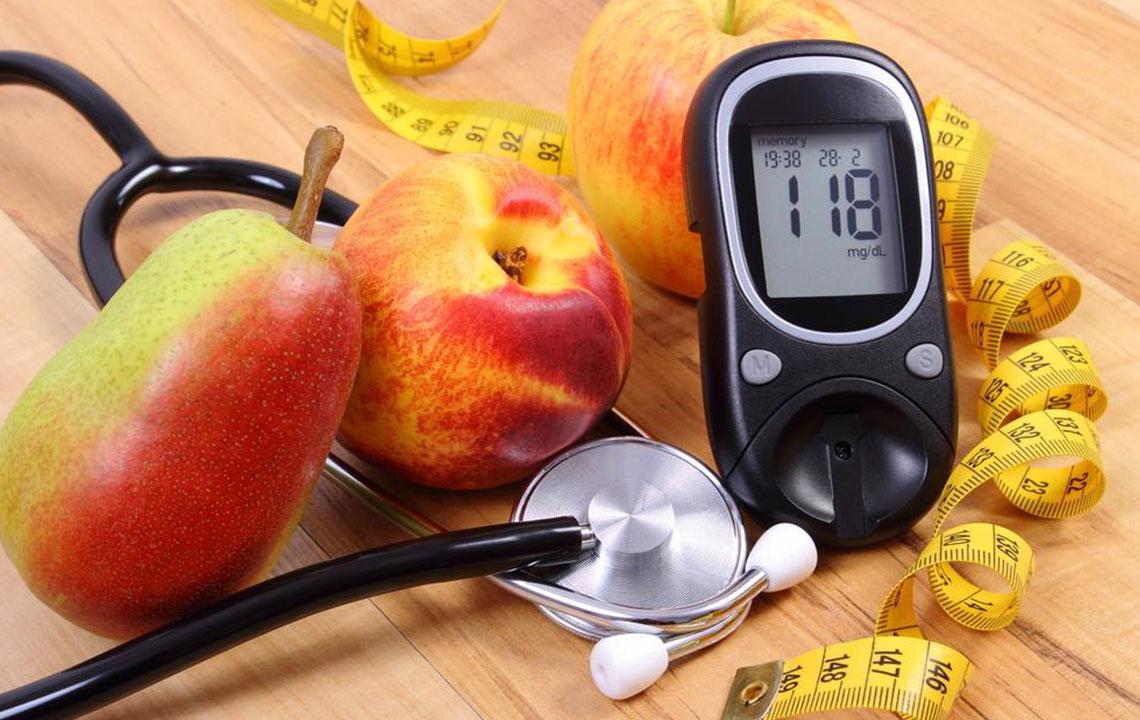Working on Type 2 Diabetes Treatment

Regular exercise, healthy eating, insulin therapy and monitoring blood sugar levels are the most important methods that help deal with type 2 diabetes.
Although no specific diet has been proven to work for diabetes, it has been observed that a diet that has low-fat foods and high in fiber works well to keep a multitude of health issues at bay, including diabetes. Whole grains, fresh fruits, and vegetables should be regularly consumed. Eating less meat, sweets and refined carbohydrates are also helpful.
Another factor that helps reduce the risk of diabetes type 2 as well as managing the problem is consuming foods that have a low glycemic index. Glycemic index is a quantity that measures the rate at which a particular food raises the blood sugar upon consumption. If food upon consumption, raises the glycemic index very quickly, it will be known as food with a high glycemic index. If food raises the blood sugar slowly upon consumption, it will be known as a portion of food with a low glycemic index. Foods that have a low glycemic index usually have a lot of fiber and are considered healthier.
Exercise
While everybody requires aerobic exercises on a daily basis, people with type 2 diabetes need it even more. However, people who have diabetes need to consult with a doctor before starting with an exercise program. People are advised to choose activities that they enjoy, and this can range from biking, walking, dancing and swimming. It is necessary to make physical activity a part of daily life.
A good recommendation to stay healthy is to work out or exercise for at least 30 minutes for at least five days in a week. Anybody who does not exercise regularly needs to build up their stamina slowly and steadily and include exercises like strength training and stretching. Another tip is to inculcate a combination of activities like walking and dancing to fulfill the aerobic exercise needs combined with exercises like yoga or weight lifting to include resistance training. This combination of practices helps efficiently control blood sugar as opposed to doing only one type of exercise on a daily basis. It is important to note that physical activity helps lower blood sugar. In case somebody has type 2 diabetes, they should always check their blood sugar levels before any physical activity. In case someone is taking medication to lower the blood sugar, he or she should eat a snack before exercising to prevent an incident of low blood sugar.
Monitoring blood sugar
The treatment plan for type 2 diabetes patients varies from person to person, and so it is necessary to check records and blood sugar levels regularly. In case insulin treatment or therapy is underway, blood sugar should be tested multiple times in a day. To keep the blood sugar levels within the target range for effective management, it is necessary to carefully monitor the blood sugar levels before and after meals, before and after exercise, etc. Blood sugar levels can often be unpredictable and can change with the effect of alcohol, food, medication, and exercise.
Medications and insulin therapy
Certain people manage to control their diabetes and handle their target blood sugar levels with exercise and diet, but many people often require medication or even insulin therapy to maintain their blood sugar. Many factors affect the decision to pick between medication and insulin, factors like diet, lifestyle, other health problems, blood sugar levels and all can affect this decision. A doctor may also prescribe a combination of different drugs from different classes to help control blood sugar in several different ways.
Possible Treatments for Type 2 Diabetes
Insulin therapy
Insulin therapy, because of the benefits it provides, is increasingly being used in the earlier stages of type 2 diabetes rather than as a last resort.
When insulin is through the mouth, it interferes normal digestive process. Therefore, it is necessary to inject insulin. A prescription for a mixture of different insulin types is recommended to be taken throughout the day. People who have type 2 diabetes usually start off with using one long-acting shot at night. These injections come with a fine needle and syringe or an insulin pen injection. The pen injection is very similar to a cartridge that is filled with ink, except that it has insulin.
The different types of insulin work in different ways:
-
- Insulin detemir (Levemir)
- Insulin lispro (Humalog)
- Insulin glulisine (Apidra)
- Insulin glargine (Lantus)
- Insulin isophane (Humulin N, Novolin N)
- Insulin aspart (Novolog)
Bariatric surgery
In case a person who has type 2 diabetes has a body mass index or BMI of more than 35, a bariatric or weight loss surgery can be recommended. In 55 to 95 percent of the people afflicted diabetes, this surgery helps return blood sugar levels to normal.


